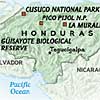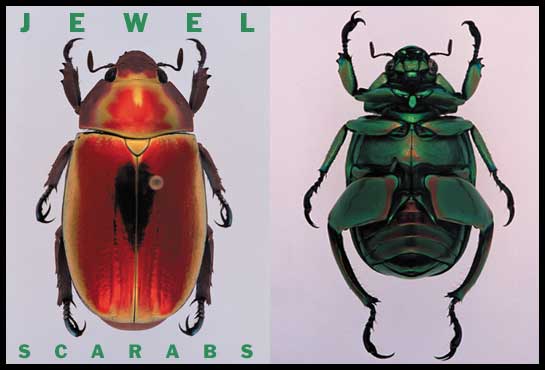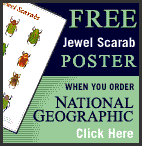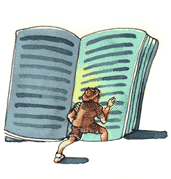 |
 |
 |

|
 |



 
In Pursuit of Beetles
Step into the world of writers and photographers as
they tell you about the best, worst, and quirkiest places and adventures they encountered in the field.
|



Get the facts behind the frame in this online-only
gallery. Pick an image and see the photographer’s technical notes.
|

Click to ZOOM IN >>

Click to ZOOM IN >>

Click to ZOOM IN >>

Click to ZOOM IN >>

Click to ZOOM IN >>



Central America


Click to enlarge >>
|
|


By Ronald D. Cave  Photographs by David Hawks Photographs by David Hawks



| Gleaming beetles
from Central America attract insect enthusiasts and offer hope for saving a priceless
habitat. |
Get a taste of what awaits you in print from this
compelling excerpt.
In a world among the clouds, entomologist David Hawks and I keep watch for the
brilliant jewel scarabs of Honduras’s tropical montane forests. We wait like
fishermen with nets cast, standing beside lighted white bedsheets spread on the ground.
When the jewels fly in, raining color against the cloth, we feel like kids again.
We collect jewel scarabs—to estimate their population sizes and study their ecology
and distribution. Dave joined me here in 1992, bringing his passion for jewels with him.
Since then we and others have found seven new species in Honduras, and we rediscovered a
species once thought extinct.
Not surprisingly, scarabs have also seduced commercial collectors. While many sell for a
few dollars, a bright red specimen might fetch $200, the finest gold, $500. With such a
bounty on scarab heads, some conservationists worry that populations could be depleted.
But our research suggests otherwise.
Catching insects isn’t like hunting jaguars. Millions of jewel scarab eggs, larvae,
and pupae remain underground, while collectors take only adults. Meanwhile, the journey to
scarab habitat weeds out all but the most determined. Many cloud forests are a strenuous
trek away; others require a helicopter.
The biggest threat to scarabs is not insect hobbyists but loss of habitat as tropical
forests are converted to farms. We believe that regulated beetle collecting by local
people—and, in time, beetle farming—could actually help slow this process. It
has been successful elsewhere with butterflies and other insects.
If a cottage industry developed, some local people might find that a treeless patch of
land is worth less in the long run than a standing forest full of jewels.
Get the whole story in the pages of National Geographic magazine.
|
|

 





|
|


| In More to Explore the National
Geographic magazine team shares some of its best sources and other information.
Special thanks to the Research Division. |
 |
 |
 |
 |

Scarabs—the family of beetles to which jewel scarabs
belong—were revered by ancient Egyptians as a symbol of the resurrection and the
enduring human soul. The dung beetle came to represent the Egyptian morning sun god,
Khepri, who was believed to roll the sun across the sky like the scarab beetle rolled a
ball of dung across the sands. Depictions of this sacred symbol can be seen throughout
Egyptian antiquity, including in jewelry. Though not directly associated with these
treasures, the gemlike beauty of the Eygptian scarab’s New World cousin, Chrysina,
is what led them to be called “jewel scarabs.” |
 |
|
 |
 |
 |
 |

University of Nebraska State Museum
www.museum.unl.edu/research/entomology/index.htm
Learn more about this and other research projects on scarab beetles in Central America.
Read about the difficulties of reaching collection sites and see the author in action. Coleopterists
Society
www.coleopsoc.org
General information on beetles from the people who study them. This site provides access
to Scarabs, an international newsletter devoted solely to the family to which jewel
scarabs belong.
Top |

Evans, Arthur V. An Inordinate Fondness for Beetles.
Henry Holt and Company, 1996.
Murkland, Pat. “Bedazzled by bugs: A UCR researcher’s passion for ‘jewel
scarabs’ may lead to saving endangered rain forest in Central and South
America,” The Press-Enterprise (Riverside, Calif.), March 12, 2000.
Top |

Chadwick, Douglas H. “Planet of the Beetles,” National
Geographic (Mar. 1998) 100-119.
Howell, Catherine Herbert. Insects. National Geographic Books, 1997.
Wings Over the Serengeti. National Geographic Videos, 1996.
“Color These Animals Before They Change,” National Geographic World (Mar.
1980) 10-15.
Zahl, Paul A. “Giant Insects of the Amazon,” National Geographic (May
1959) 632-669. Top |
|
|
 |
 |


![]()


![]()